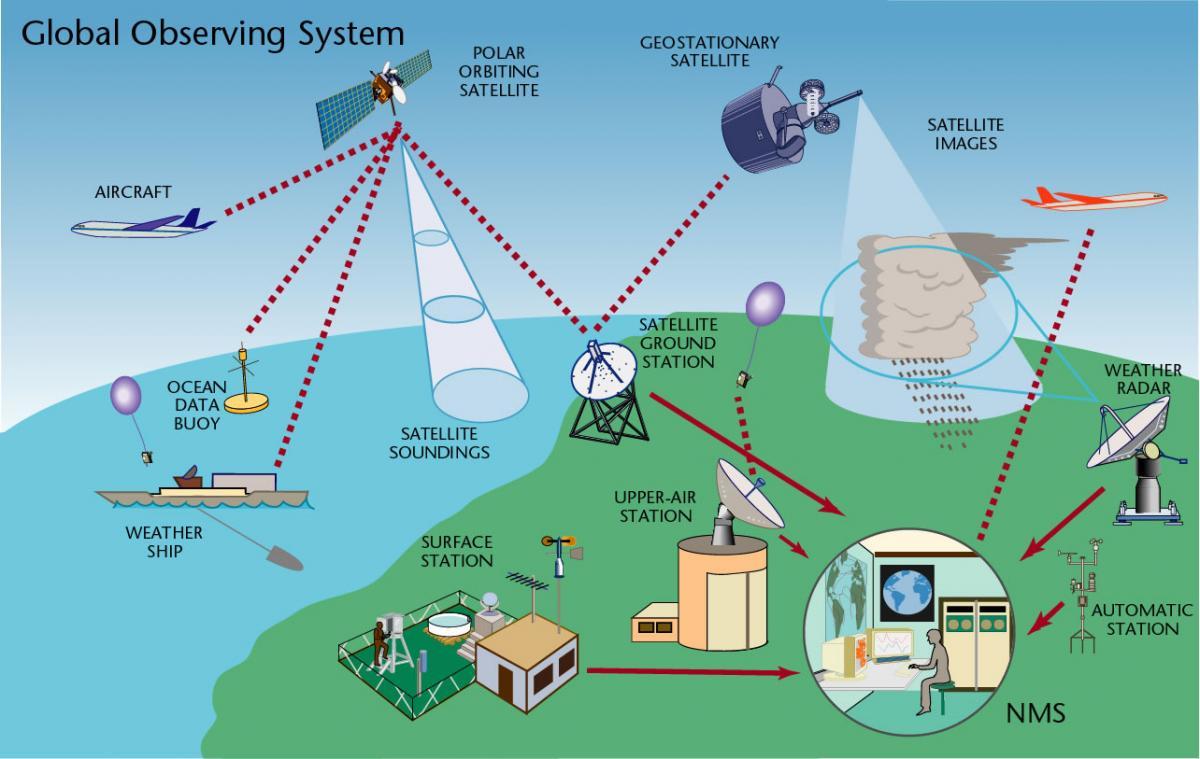Satellite-to-Satellite Tracking (SST) Technology
The essence of satellite-to-satellite tracking (SST) technology is the high-resolution determination of distance changes between two satellites, which is generally categorized into two types, namely, high-low satellite tracking and low-low satellite tracking. The former is a high-orbit satellites (such as geostationary satellites, GPS satellites, etc.) to track low orbit (LEO) satellites or space vehicles, the latter is in the largely the same low orbit (LEO) on the tracking between the two satellites, the two satellites can be separated from each other by hundreds of kilometers, the two types of SST technology will be the LEO satellites as a sensor of the Earth's gravitational field to the inter-satellite unidirectional or bi-directional microwave ranging system The relative velocity between the satellites and its variability are determined. The information reflected in the irregular variation of this velocity contains the Earth's gravity field information. The lower the orbit of the satellite, the more pronounced the influence of the gravity field on this velocity variation, and the higher the resolution of the gravity field reflected.

Of these two types of SST techniques, the information obtained by tracking with high and low satellites is richer because:
(1) high-orbit satellites, especially with multiple high-orbit satellites (e.g., GPS) can obtain the information conveyed by LEO satellites being in most of the orbits; (2) medium-wave, long-wave, and short-wave information about the ground's gravity field can be recovered; and (3) unlike LEO satellites, high-orbit satellites are less affected by the gravity field, so that inter-satellite velocity variations can better reflect the gravity field information, and at the same time the orbits of the high-satellites can be easier to be accurately The orbits of high satellites are also easier to be determined accurately.
The first test of SST technology was carried out in 1975, the high-orbit satellite is the geostationary satellite (GEO) ETS a 6, and the low-orbit satellite for the NIMBUS— 6 and APOLLO— SYYUS, but due to the observation of the value of the resolution and accuracy of the value is too low (less than 10μ m/s), and did not achieve very satisfactory results, therefore NASA gave up this research; until 1991, the use of GPS satellites as a high-orbit satellite again for the test, using LANDSAT as a low-orbit satellite, the satellite plane mounted GPS receivers, orbiting and determination of the distance between the high and low satellites and their variability of the test, and later in the T/P ocean altimetry satellite also made a similar test, but also due to the determination of the distance and its variability of the resolution and There are no satisfactory results due to the low resolution and accuracy of the distance and its variability; this time, the European Space Agency (ESA) launched under the auspices of Germany (GFZ) CHAMP, GRACE and GOCE three satellites, in the next 10 years will be dedicated to SST and Satellite Gravity Gradient Measurement (SGG) experiments, in order to improve the understanding of the Earth's gravitational field.
IGS considers the continuous support of low orbiting satellites (LEO) to be an important aspect of its mission, and has therefore established the LEO Working Group, which has formulated a work plan and put forward a number of recommendations: (i) to establish a network of standardized ground stations for tracking LEO by IGS to meet LEO requirements; (ii) to transmit and process the data from these ground station networks at a rate of shorter than 24 hours, providing the data required by LEO; and (iii) to provide the data required by LEO to the ground station networks. IGS transmits and processes the data of these ground station networks at a short 24-hour rate to provide the data and products required by LEO; ③ establishes the corresponding GPS data exchange format for the GPS 1 Hz sampling rate data of the ground station networks; ④ understands and investigates the role and significance of the precision orbit of IGS for the acquisition of GPS data on the LEO platform.
GPS entered into full formal operation in 1994, the system consists of 21 satellites operating along 6 orbital planes, and 3 satellites have been in hot backup status, totaling 24 . However, the total number of GPS satellites in orbit actually fluctuates, with 27 GPS satellites in orbit in 1998. If you count the first orbital plane at an inclination of 55 degrees to the equator, the other five orbital planes intersect each other at an angle of 60 degrees.
Estimates of GPS star clock bias aspects are available from only two IGS analysis centers.Of the nearly 200 permanently and continuously operating global tracking stations of the IGS, nearly 70 external frequency standards are used, of which about 30 use hydrogen clocks, about 20 cesium atomic clocks, about 20 rubidium atomic clocks, and the rest use GPS internal crystal oscillators.
The IGS also provides pole shift and world time information . ...The IGS publishes the final daily polar coordinates (x,y) with an accuracy of ±0. 1mas, and the corresponding accuracy of the snapshot is ±0. 2mas.GPS, as a space geodetic technology, does not have the function of determining UTC by itself, but since on the one hand the GPS satellite orbital parameters are related to UT, and on the other hand they are also related to the determination of the Earth's rotation rate However, because on the one hand, GPS satellite orbit parameters are related to UT, and on the other hand, they are also related to the determination of the Earth's rotation rate, which is the time derivative of UT, IGS can still give the value of the length of day (LOD) of each day. IGS can further determine the chapter motion term and the high-resolution pole shift, which is mainly due to the improvement of the quality of the observation of the IGS observatories, the rapid and timely transmission of the data, as well as the improvement of the data processing methods, and there is no intrinsic change, whereas the former is a leap in the technology.
An extremely useful and important piece of information provided by the IGS are the coordinates of the continuously operating stations (tracking stations) of the IGS, the corresponding frames, the calendar elements, and the station movement rates, with an accuracy of better than 1 cm for the former, and better than 1 mm for the latter. a. The reference frames used for the coordinates of the stations of the IGS are harmonized with those of IER S. The use of the ITR F91 was started at the end of 1993, followed by ITR F92 in 1994, and ITR F92 between 1995 and 1995, and ITR F92 between 1995 and 1995, and ITR F92 between 1995 and 1995. ITR F92 was introduced in late 1993, ITR F93 from 1995 to mid-1996, ITR F94 from mid-1996 to April 1998, ITR F96 from March 1, 1998, and 1TR F97 from August 1, 1999 at IGS.
New contribution of IGS to the determination of short-term chapter motions. It is well known that the movement of the Earth's axis of rotation on the Earth's surface is called the pole shift, while its motion in inertial space is called the yearly difference and the chapter motion.GPS technology cannot determine the UT, but only the day length.... The same principle applies to chapter motion, i.e., GPS data cannot determine the longitude and inclination of chapter motion, but it can determine the temporal variability (derivative with respect to time) of these quantities.
In summary, the future development of GPS will be reflected in the following aspects:
(1) the update of the satellite system and the coexistence of multiple satellite positioning systems will significantly improve the accuracy and reliability of satellite navigation and positioning.
(2) Dual-frequency high-precision geodesic receivers will continue to be highly monopolized in the hands of several technologically leading GPS manufacturers, the United States will continue to maintain its absolute advantage.
(3) Single-frequency geodetic receivers and navigation receivers OEM board industry will spread to all over the world, although it is a low-grade GPS products, but the use of a wide range of users, the market is large. The United States to GPS single-frequency OEM board production technology transfer exports, thus promoting the world's enterprises to invest in GPS OEM production.
(4) Land navigation and positioning products will become the fastest growing GPS industry.
(5) After the 21st century, the positioning system will develop in the direction of mutual competition and supplementation of multiple systems.














